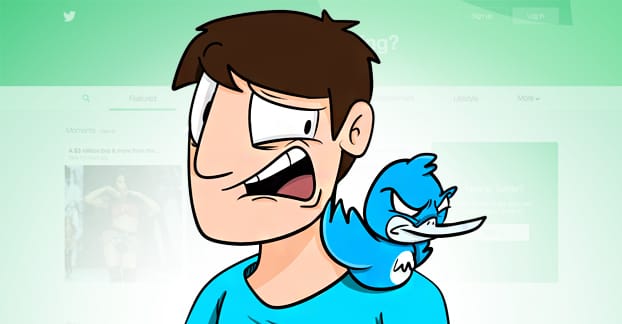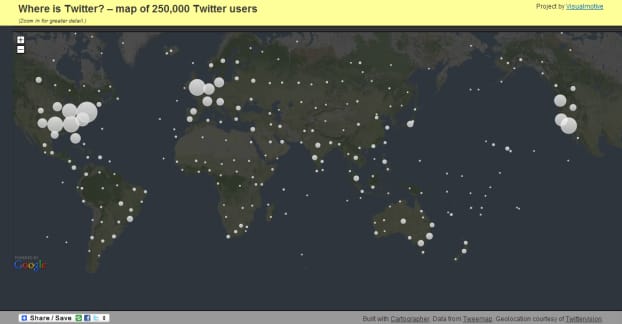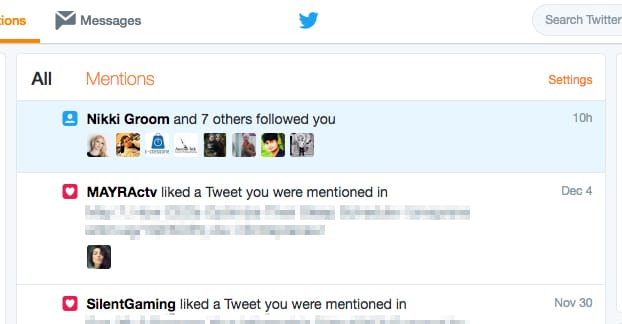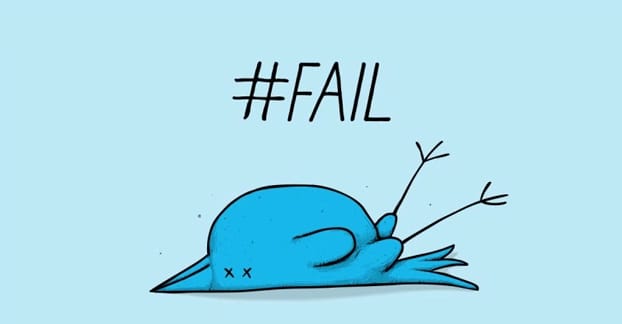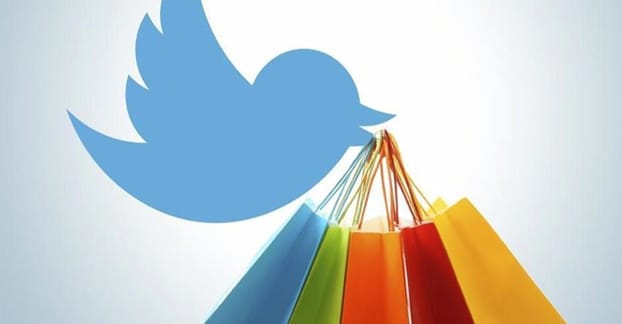Caught your attention, did I? I’m not just being provocative with the title here; I’m legitimately telling you that there are good reasons not to buy Twitter followers. If that seems odd coming from someone who sells Twitter followers as a business, well, it’s all part of the game, right? I want you to be satisfied with your purchase, which means I want you to know going in what buying followers can and can’t do.
The reasons below are bad reasons to buy followers. If one of them – or all of them – are your motivation, you’re better off working with Twitter ads, establishing an organic posting cycle referring traffic to and from your website, and working on influencer marketing instead.
Reason #1: You Want More Sales
Twitter is generally used for two purposes. The first is community; people use it to talk, to share articles, and to generally socialize with each other. When you’re a brand page, this is limited, but when you’re representing your business as a CEO or high ranking officer in the board, you have more leeway to get personal. Building a sense of community helps people recognize your brand as a good one, and can passively increase sales through brand recognition.
The second reason to use Twitter is customer service. It is swiftly becoming apparent that customer service on Twitter is one of the best uses of the platform for a business. It’s much faster to reach out and identify issues people are having, and to help troubleshoot and fix them, without having to go through a packed inbox or navigate a web interface by phone. CS on Twitter is only going to get bigger in the coming decade.
Brands looking to generate sales directly through Twitter are going to have a hard time. The primary way to do it is to offer time-sensitive offers and deals, incentives for users who are browsing right now to click through and buy. You don’t have the luxury of a long sell with 140 characters.
The problem here with buying followers is that the followers you buy are not going to be the highest quality.
There are essentially three tiers of followers you can buy, be it from a service like ours, a seller on Fiverr, or someone making their own thin website. The top tier are decently relevant followers; people who are perhaps interested in your industry or your product category, but maybe not your brand specifically. Below that are out-of-range followers, people outside of your demographics and outside of your area of operation. A cleaning company in L.A. getting followers from Alabama might count here, but so do web businesses getting followers from Bangladesh. The third tier are fake accounts.
The one thing all of these have in common is how disinclined they are to make a purchase from you. You can get them to follow your account, but they generally aren’t going to pay much attention to it, and they aren’t all that likely to go out and make a purchase however compelling your offer may be. The bot tier won’t ever buy, and the tier outside your service area probably can’t buy even if they want to. You need to shell out for high tier followers to have a chance of conversion, and the conversion rates are going to be lower than the followers you get through more expensive means.
Reason #2: Fire-and-Forget Method
This second reason you would want to buy followers is as a sort of passive, fire-and-forget method of growth. You want to subscribe to a service that gives you, say, 5,000 followers each month. The growth month over month slows down, but it’s reliable, and the increase in number of followers can give an aura of authority and power to your account.
The thing is, buying followers alone is not a good marketing technique. For all of the reasons listed above, the followers you buy aren’t likely to be all that interested in converting, regardless of what your conversion action may be. Yes, you will get a higher number in your follower count, but that’s all you get if you don’t have other forms of marketing as well.
Think about it in terms of engagement. The followers you buy aren’t going to be very engaged. Some of them will be, but most of them are just following you because they follow anyone the come across, or even simply because they’re being paid to do so. If you want engagement, if you want to build a community, you’re going to need real people who are actually interested in following you.
Buying followers is something that should be done at low volume, to supplement your other means of growth. It will not be a replacement for other means of marketing, and if you try to use it as such, you will encounter nothing but frustration. You need to continue posting organically, retweeting and sharing content you curate from other sources, engaging and encouraging engagement, and probably buying paid ads for both your website and your Twitter account.
Reason #3: You’re Tired of Twitter Ads
Buying followers from a legitimate, high quality seller, is generally similar to buying paid advertising on Twitter. You’re simply accessing an ad network you wouldn’t otherwise reach, allowing someone else to promote you in their own way, and hoping the people they pull in for you resonate with your brand.
Twitter ads are likely going to be on par with or more expensive than buying followers in bulk from an independent seller. However, you also get a lot more control and you’re going to end up with more better, higher quality, and more engaged new followers. Or will you?
The problem many people run into, and the reason so many turn to buying followers directly, is that they can’t run ads properly. There’s nothing mechanically stopping them, Twitter provides them access to all of the appropriate tools, it’s simply that there are so many elements in play that it’s hard to be effective. If you have no experience with Twitter ads, or paid advertising in general, chances are pretty good that you’re going to waste time and money before you figure out what works.
To help assist you with that, here are some guides you can read for Twitter ad success.
- HootSuite’s Guide to Your First Twitter Campaign – This guide helps you determine what you’re trying to get out of ads, who you should be trying to reach with your ads, and how to set them up to run successfully. It’s a great guide if you’ve never explored the Twitter ads system before, or if you’re a newcomer to paid advertising.
- Twitter’s Tips for Writing Effective Ad Copy – Twitter wants businesses to succeed with advertising on their site, so their blog is a wealth of information. This post deconstructs one of the more complex topics, which is creating ad copy. Tweeting effectively is hard enough, but when money and growth are directly on the line, the stakes are that much higher.
- AdEspresso’s List of Successful Twitter Ads – AdEspresso is generally focused on Facebook, but they dabble in Twitter, and the information tends to apply to both. This list of ads can show you what a good ad looks like, for a variety of industries and a variety of purposes. They also spend a few words for each highlighting why the ad is successful.
- Social Media Examiner’s Guide to Building a Successful Campaign – The first guide, from HootSuite, is great for a beginner but it doesn’t go into great detail. This guide is the same basic formula, taking you through choosing an objective, targeting, and more, but goes into greater detail. I saved it for last because it’s aimed at people who have some basic experience and know what they’re trying to do.
Unfortunately, there’s no two ways about it; Twitter ads are just good. They’re effective, so long as you know how to use them. Sooner or later, you’re going to have to learn.
Reason #4: You Want Growth Immediately
Patience is a virtue in marketing. For every viral surge in traffic, most businesses spend months or even years producing content, promoting it, working on user outreach and influencer marketing, and so forth. It’s all a long, slow, churning machine.
Paying for followers, either through a third party seller or through Twitter ads directly, will get you a brief but short-lived spurt of growth. You will see a spike in your followers, and there will be some fluctuation as some of them unfollow shortly after following, and you will settle at a higher number than you had when you started.
Here’s the thing, though; your growth rate without paid followers is the same. If you’re gaining 5 followers a month, and you buy a package of 5,000 followers from Fiverr, when you’re done you’ll still be growing at a rate of 5 followers per month. Your current efforts, outside of the paid marketing, aren’t going to improve simply because you have more followers.
Now, this is one way where high quality first-party Twitter ads and low quality third party followers differ. As I’ve mentioned before, you might get some engagement from your new followers, but they won’t be as high quality or as frequent as the engagement actions you get from followers who actually like your brand. When you get real, high quality followers, you get more than just a higher number in your profile. You get people who are sharing your content with their audiences. This sharing helps bring more exposure to your brand and accentuates your other marketing efforts.
Low quality followers from poor sellers – particularly bot followers and clickfarm followers – won’t be sharing your content. It’s no different from the people who follow you in hopes of getting a follow from you in return. They don’t care about your content, and consequently don’t take actions that would benefit you or your content.
It’s a matter of amplification. Low quality followers are going to have a very low rate of amplification, like only being able to turn a speaker up from 1 to 5. Meanwhile, high quality followers allows you to crank that dial up to 11.
Reason #5: You Want a Quick Profit
There’s one thing that purchased followers, organic followers, and Twitter Ads followers all have in common, and that’s a generally low return on investment. Organic marketing may not seem as though it has a high initial investment, but that’s just because the investment is deferred. You don’t calculate the cost of writing a blog post into your Twitter marketing because it’s part of your general content marketing. The cost is still there, it’s just not part of the calculation you make.
Twitter is not a platform with a high return on investment. Paying for followers, regardless of whether you get them from Twitter ads or from Fiverr, is going to get you more people following your account, which means more people to amplify your content, though again it varies in how well they’re up to the task. That’s generally where the direct benefit of Twitter ends. Twitter is not an ecommerce platform. Twitter users don’t like being sold to directly. If they like your brand, they’ll click through to you content, explore your site, and be more likely to convert, but that requires more out of Twitter than just a high follower count.
This one is a matter of perspective more than it is the failings of Twitter itself. Many people come in to Twitter marketing thinking that having a large audience is the primary focus. The reality is that you can get by perfectly well with a relatively small audience. You don’t need a hundred million followers to succeed; you just need the right kind of followers.
That’s why Twitter is touted as a customer service platform; its strengths lie in communications rather than in sales. You’re broadcasting content, you’re engaging with people, you’re building brand awareness, and you’re helping existing customers. You’re not often going to be creating new customers, and you’re even less likely to do so with purchased followers.
